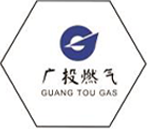
8 月 . 13, 2024 13:20
Back to list
Innovative Design and Analysis Techniques for Enhancing Pressure Vessel Efficiency and Safety Standards
Understanding Pressure Vessels Design, Applications, and Safety
Pressure vessels are critical components in various industries, designed to contain fluids at pressures significantly higher than the ambient pressure. These vessels can be found in chemical plants, oil refineries, power generation, and even in domestic appliances like pressure cookers and gas tanks. The ability of pressure vessels to safely contain pressurized fluids while withstanding environmental factors and ensuring operational efficiency makes them a pivotal subject in engineering and safety protocols.
Design Considerations
The design of a pressure vessel is a complex process that involves several key considerations, including material selection, wall thickness, shape, and support structures.
1. Material Selection The materials used for pressure vessels must possess high tensile strength and corrosion resistance. Common materials include carbon steel, stainless steel, titanium, and composite materials. The choice of material not only affects the vessel’s durability but also impacts manufacturing costs and safety.
2. Wall Thickness and Shape The thickness of the vessel walls is dictated by the internal pressure, the dimensions of the vessel, and the nature of the contents. Generally, cylindrical shapes are preferred due to their ability to evenly distribute stress. Ellipsoidal or hemispherical ends are often utilized to further optimize pressure distribution and minimize the risk of failure.
3. Support Structures Pressure vessels often require supports or foundations to ensure stability. The placement and design of these supports are crucial to prevent buckling and ensure that the vessel can withstand external loads due to environmental factors like wind or seismic activity.
pressure vessel

Applications of Pressure Vessels
Pressure vessels have a wide range of applications across various industries. In the petrochemical sector, they are used for storing gases and liquids under high pressure, such as natural gas, propane, and chemicals. In nuclear power plants, pressure vessels play a vital role in containing reactor coolant and fuel. Additionally, in food and beverage industries, pressure vessels are used in the sterilization processes for canned foods and beverages, ensuring safety and longevity.
Safety Standards and Regulations
Due to the inherent risks associated with pressure vessels, stringent safety standards and regulations govern their design, construction, and maintenance. Organizations like the American Society of Mechanical Engineers (ASME) and the European Pressure Equipment Directive (PED) establish guidelines to ensure that pressure vessels are constructed to withstand extreme conditions safely.
Regular inspections and maintenance procedures are critical in prolonging the lifespan of pressure vessels and preventing catastrophic failures. These inspections often involve non-destructive testing (NDT) methods like ultrasonic testing, radiography, and magnetic particle inspection to identify any flaws or areas of concern.
Conclusion
In conclusion, pressure vessels are indispensable in modern industrial applications, playing a crucial role in the safe storage and transportation of pressurized fluids. The complexities involved in their design and construction highlight the importance of adhering to strict safety standards and practices. As industries continue to evolve and demand more efficient and robust solutions, the engineering of pressure vessels will likely advance, incorporating new materials and technologies, all while maintaining the highest safety standards. Understanding the intricacies associated with pressure vessels is essential not just for engineers but for everyone involved in industries reliant on these critical structures.
Latest news
-
Unlocking The Quality Gas Pressure ReducersNewsNov.01,2024
-
The Role of Gas Pressure Reducing StationsNewsNov.01,2024
-
The Importance and Functionality of Safety Relief ValvesNewsNov.01,2024
-
The Essential Role of Safety Valves in Natural Gas ApplicationsNewsNov.01,2024
-
The Essential Role of Gas Pressure RegulatorsNewsNov.01,2024
-
Enhance Your Premium Gas FiltersNewsNov.01,2024

